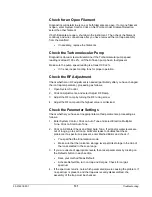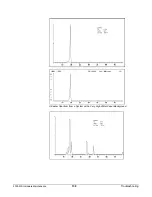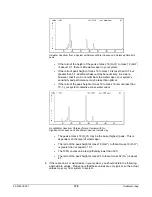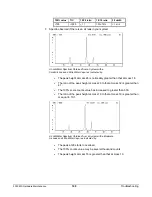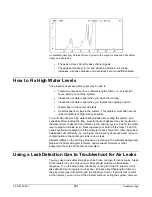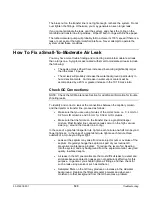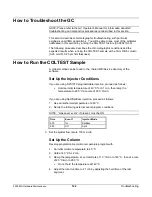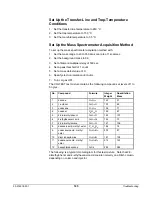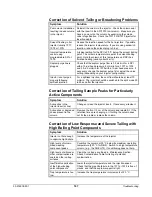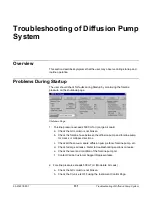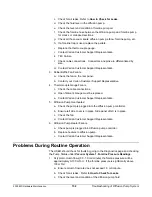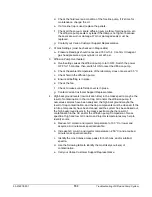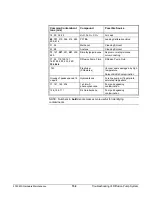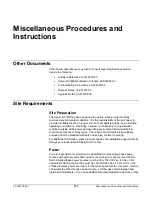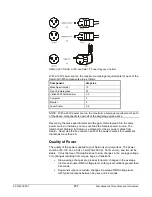
03-914978-00:1
143
Troubleshooting
The brass nut on the transfer line is not tight enough, recheck the system. Do not
over tighten the fittings. Otherwise, you may generate an even larger leak.
If you cannot eliminate the leak, vent the system, and check the O-ring on the
manifold and transfer line for particles. Wipe off both O-rings with lint-free paper.
The turbomolecular pump will probably fail to achieve its 100% speed if there is a
leak or poor seal at the turbo/manifold interface. Never attempt to operate the
system under these conditions.
How To Fix a Small-To-Moderate Air Leak
You may have more trouble finding and correcting a small-to-moderate air leak
than a large one. Symptoms associated with small-to-moderate air leaks include
the following:
•
The peak at mass 28 will have increased, becoming significantly larger
than the mass 18 peak.
•
The air leak will probably increase the water background, particularly in
humid environments. An increase in water vapor content will be
accompanied by a 20% or greater increase in the 19:18 mass ratio.
Check GC Connections:
NOTE: Check the GC Maintenance Section for additional information for trouble
shooting leaks.
To identify and correct a leak at the connections between the capillary column
and the injector or transfer line, proceed as follows:
•
Make sure that you are using ferrules of the correct size, i.e., 0.4 mm for
0.25-mm ID columns, and 0.5 mm for 0.32-mm ID columns.
•
Make sure that the ferrule on the transfer line is a graphite/Vespel
mixture. Most transfer line connection leaks occur on the high vacuum
side (e.g., around the transfer line O-ring).
In the case of a graphite/Vespel ferrule, tighten each ferrule one-half turn beyond
finger tightness. In the case of a graphite ferrule, tighten each ferrule three-
quarters of a turn beyond finger tight.
•
Leaks at the septum may arise from loose injector nuts or overuse of the
septum. Regularly change the septum as part of your routine GC
preventive maintenance program. To reduce the level of air bleeding
into the system and any background from the septum material, use good
quality, low bleed septa.
•
Air leaks in the GC pneumatics are the most difficult leaks to detect and
eliminate because detection gases are not particularly effective for this
purpose. In general, you should tighten all fittings, and then check for
such a leak using a solvent such as methanol.
•
Saturated filters on the GC may produce an increase in the air/water
background. Replace the filters at regular intervals and whenever
moisture or other background from the GC becomes a problem.



